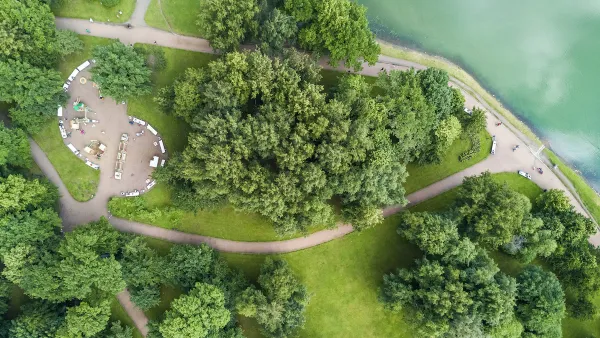Thanks to private funds, NYC invested six times more in building and improving its parks during Mayor Bloomberg's tenure than was spent in the prior decade. But what will happen to these parks when their billionaire backer leaves office?
We've looked before at New York City's growing parks disparity. But another concern with the influx of private funds that's made the city's astonishing parks expansion possible, at the same time that the Parks and Recreation department's maintenance budget was being cut, is what will happen to the shiny new open spaces when the Mayor with the billion dollar rolodex leaves office.
"There's no question that the big-picture story is an impressive one: There have been new parks and significant renovations to large parks," said Holly Leicht, executive director of New Yorkers for Parks.
"The big concern is that already the maintenance budget has not kept up with the existing supply of parkland, much less being enough for additional parks," Ms. Leicht said. "Will they really be able to sustain themselves outside of the public budget, as was the premise of their creation?"
"Nearly everyone agrees that some private support for parks is essential given constrained municipal budgets," writes Laura Kusisto. "But parks groups said it may also be time to step back and realize that the private sector can't entirely be relied upon to replace shrinking parks budgets."
"'The ones that are expected to fly on their own, whether they can do it or not is their problem, but it is also our problem as a society as a whole,' said Deborah Marton, of the New York Restoration Project, which helps maintain parks in low-income neighborhoods. 'Then we have failed public spaces that we all have to deal with.'"
FULL STORY: New York City's Parks Grow With Private Funds

Planetizen Federal Action Tracker
A weekly monitor of how Trump’s orders and actions are impacting planners and planning in America.

Chicago’s Ghost Rails
Just beneath the surface of the modern city lie the remnants of its expansive early 20th-century streetcar system.

Amtrak Cutting Jobs, Funding to High-Speed Rail
The agency plans to cut 10 percent of its workforce and has confirmed it will not fund new high-speed rail projects.

Ohio Forces Data Centers to Prepay for Power
Utilities are calling on states to hold data center operators responsible for new energy demands to prevent leaving consumers on the hook for their bills.

MARTA CEO Steps Down Amid Citizenship Concerns
MARTA’s board announced Thursday that its chief, who is from Canada, is resigning due to questions about his immigration status.

Silicon Valley ‘Bike Superhighway’ Awarded $14M State Grant
A Caltrans grant brings the 10-mile Central Bikeway project connecting Santa Clara and East San Jose closer to fruition.
Urban Design for Planners 1: Software Tools
This six-course series explores essential urban design concepts using open source software and equips planners with the tools they need to participate fully in the urban design process.
Planning for Universal Design
Learn the tools for implementing Universal Design in planning regulations.
Caltrans
City of Fort Worth
Mpact (founded as Rail~Volution)
City of Camden Redevelopment Agency
City of Astoria
City of Portland
City of Laramie





























